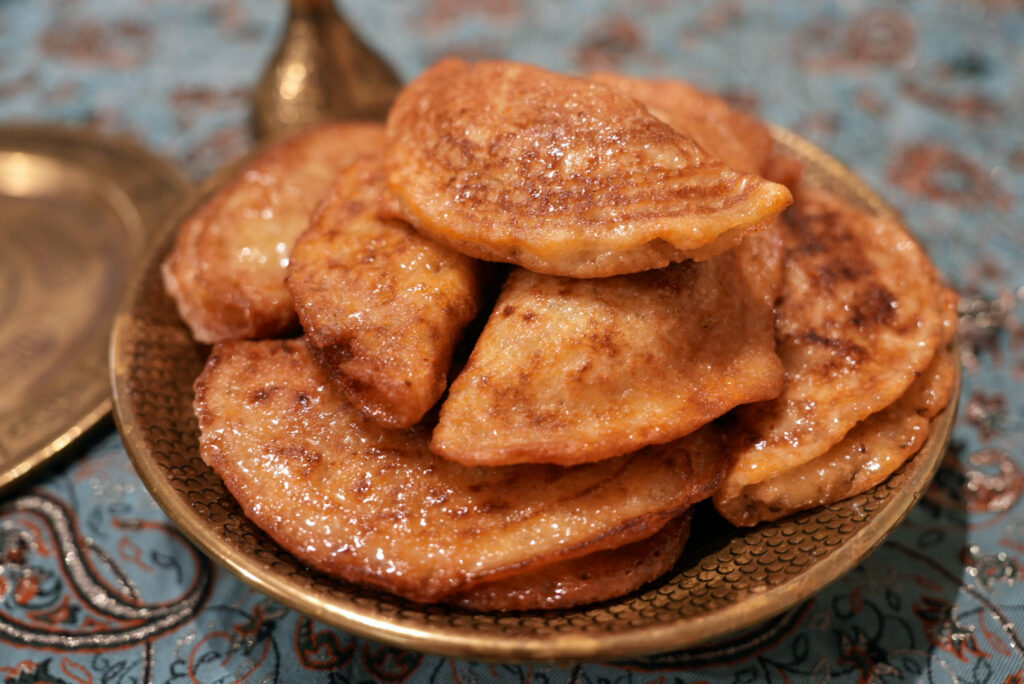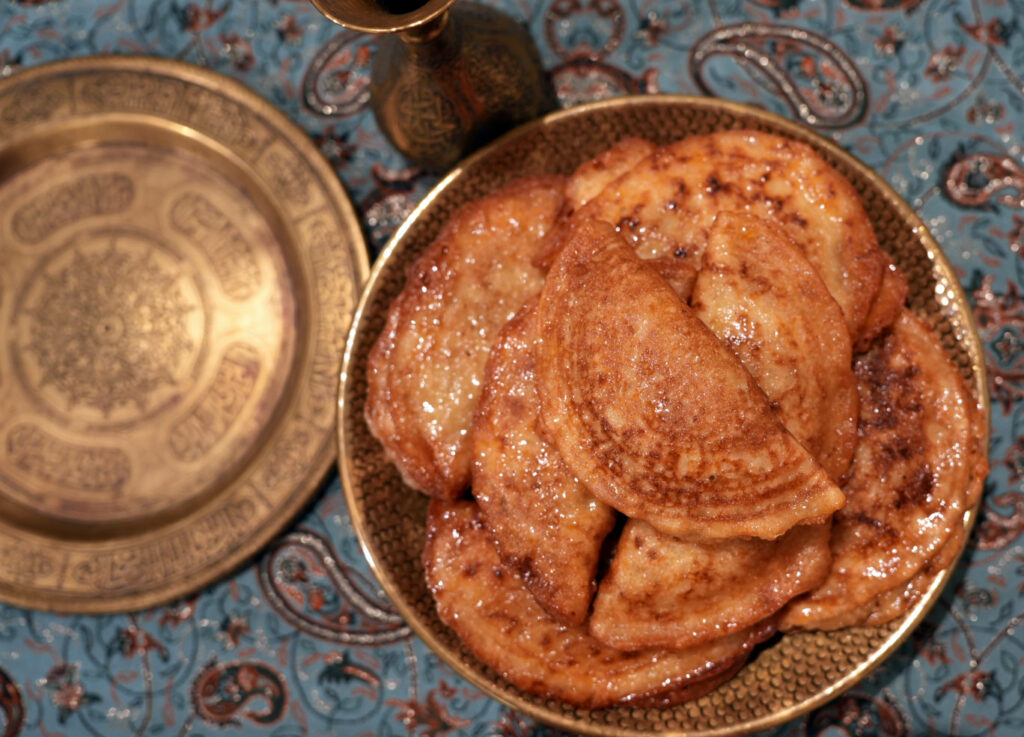This is an Andalusian take on what are called ‘Abbasid qaṭā’if‘, a filled crepe, by the author of the 13th-century cookery book. There are quite some similarities with today’s sweets by the same name, a Ramadan favourite in many countries.
The first thing to do is to make flour for the crepes with semolina, hot water, salt and yeast. The filling is made with sugar and almonds, perfumed with aromatic spices (cloves and spikenard) and rose water. After cooking the crepes, they are stuffed with the filling, and then sealed by dredging the edges in starch dissolved into water. The crepes are fried in almond oil and when they have turned golden. Set them aside to drain off the oil and then drench in rose syrup. Serve and enjoy!
According to the 11th-century pharmacologist Ibn Jazla, this kind of qaṭā’if is beneficial for those addicted to physical activity. It is very nourishing, but slows down digestion and causes stones in the urethra. But not to worry! These negative effects can be rectified by eating sweet and sour pomegranates or oxymel.



